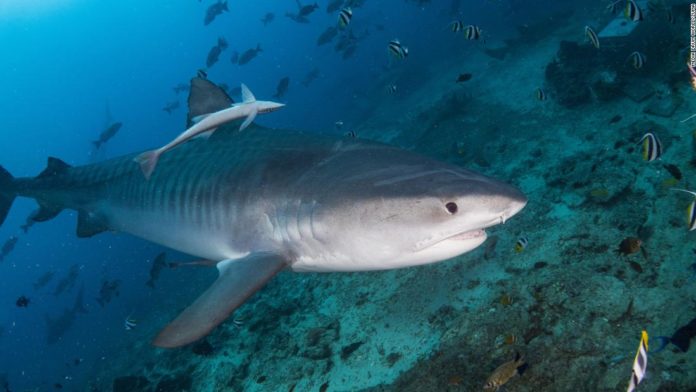There are more than 500 species of shark. They are as diverse as the dwarf lantern shark, which is
smaller than a human hand, and the whale shark, which can grow as long as a school bus, said marine biologist Michael Heithaus, professor and dean of the College of Arts, Sciences & Education at Florida International University in Miami. Given that there are a large number of unique species, some characteristics may be true for one species, but not another.
Sharks have one of the longest life spans compared with other animals.
Greenland sharks are the longest-living known vertebrate on Earth, according to
a 2016 study published in the journal Science. Researchers using radiocarbon dating determined that the North Atlantic species likely lives an average of at least 272 years, and often doesn’t reach maturity until 150 years of age.
Greenland sharks can live for at least 400 years, scientists have estimated.
Sharks are older than trees and dinosaurs
The earliest evidence of shark fossils dates back as far as
450 million years, which means these creatures have been around at least
90 million years before trees and
190 million years before dinosaurs.
Sharks have been around since before
Pangea broke apart, said Catherine Macdonald, director of Field School and lecturer at the University of Miami’s Rosenstiel School of Marine and Atmospheric Science. (There was one single gigantic continent called Pangea some 250 million years ago.)
Additionally, sharks have survived five mass extinctions, one of which wiped out around 96% of all marine life.
Sharks may be helpful for our environment
Tiger sharks, one of Australia’s primary predators, may help ecosystems respond to extreme climate events. The species’ prey, including
green turtles, seabirds and stingrays, avoid shallow water, often areas with seagrass. As a result, the seagrass is able to grow to be bushlike and create a safe-haven nursery area for juvenile fish, shrimp and crabs, Heithaus said.
Seagrass absorbs the carbon that is in the atmosphere and uses it to build its body. When the seagrass dies, the dead material gets buried in sediment on the ocean floor, and the carbon is taken out of circulation, Heithaus added.
Researchers are currently trying to determine whether this phenomenon occurs for other shark species and in other places such as coral reefs.
“It seems like it’s more than just tiger sharks,” Heithaus said. “It’s probably these bigger species that play an outsized role in helping shape the ecosystems they’re a part of.”
Shark pregnancies can last longer than 3 years
Reproduction patterns in sharks vary.
On average, sharks give birth after 11 or 12 months of pregnancy, but some sharks, such as the
frilled shark and
basking shark can be pregnant for over three years.
Some sharks, like
mako sharks and bull sharks, give live birth, while other sharks, like cat sharks, lay eggs, said Jasmin Graham, president and CEO of Minorities in Shark Sciences, based in Bradenton, Florida.
Long pregnancy terms, and the fact that some sharks take 10 to 12 years to reach sexual maturity, like the
great white, further impact populations decimated by unsustainable fishing practices.
Sharks do not vocalize
Sharks are primarily silent creatures, as
they don’t have organs for producing sound.
Instead of speaking, sharks communicate through body language, such as zigzagging, shaking and moving their jaws.
Sharks can sense electricity
Sharks have a
sixth sense — they can pick up nanoscopic electromagnetic currents. This extra sense can help them navigate the ocean and find prey, or even a mate.
“The minute electrical impulse that a prey’s brain sends to its heart to tell it to beat is detectable to sharks, so they can find hidden prey quite effectively,” Macdonald said.
With this finely attuned sense, sharks hunt sick and weak animals, playing a crucial role in keeping the marine ecosystem healthy.














